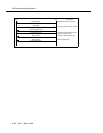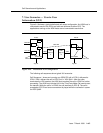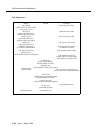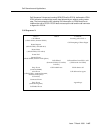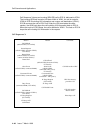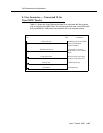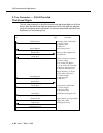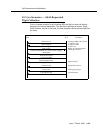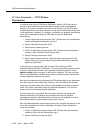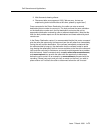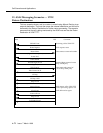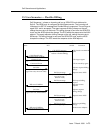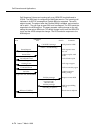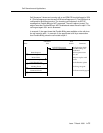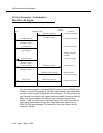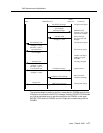
Call Scenarios and Applications
A-70 Issue 7 March 1998
11. User Scenarios — VDN Return
Destination
A customer may use the VDN Return Destination feature (G3V2 and later) to
provide a more flexible remote access feature together with host-based call
security. The remote user/caller does not have to call back into the ECS when
multiple destinations need to be reached or enter his/her identification every time
a new destination is desired. For example, a customer can program the following
vector that is accessed by dialing a VDN that has a Return Destination
administered.
1. Collect 8 digits after announcement 1001 (“Please enter your identification
number and password followed by # sign.”)
2. Adjunct Routing link extension XXX1
3. Wait 6 seconds hearing silence.
4. Collect 16 digits after announcement 1002 (“Please enter the telephone
number of your destination followed by # sign.”)
5. Adjunct Routing link extension XXX1
6. Wait 6 seconds hearing silence. Disconnect after announcement 1003
(“We are sorry, but we are experiencing technical difficulties at this time,
please try again later.”)
In this scenario, a remote caller calls into the ECS by dialing the VDN
administered with the Return Destination. The vector executed prompts the caller
to enter an identification number and a password that will be passed, via the
adjunct routing vector command, to the host for validation. The host can keep
track of invalid attempts or decide to de-activate or activate certain identification
numbers based on customer set criteria.
After the host-based security is passed, the ECS collects digits for the destination
the caller wants to reach (vector step 4 above). The host receives the number
entered by the caller (vector step 5 above) and validates the entered number to
check if the caller is allowed to reach the specified destination. If so, the host
routes the call to the desired (dialed) destination.
If the host security is not passed, the host routes the call to an appropriate
alternate destination (for example, announcement with security violation
message) and log the invalid call attempt. If the host is not available, the call is
disconnected after an announcement (vector step 7 above).
After the called destination disconnects from the call, the caller can remain on the
line to be connected to the Return Destination. A sample Return Destination
vector is as follows:
1. Collect 16 digits after announcement 1002 (“Please enter the telephone
number of your next call followed by # sign.”)
2. Adjunct Routing link extension XXX1



